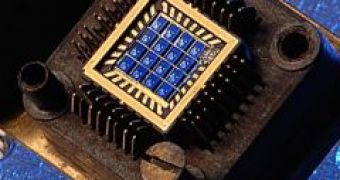The silicon transistor was invented in 1947 at Bell Laboratories and most electronic circuits are based on it, such as radios, televisions and computers. Although it is the most reliable electronic component that switches currents, it has great disadvantages.
We all know the basic language of the computer circuits is the binary code. That is because the transistor can only switch between two states: logical '1' or logical '0' meaning 'open' or 'closed'. There have been many experiments in which other electronic components were conceived, with three or five states. But they proved to be unstable. Meaning that of a total of about 10.000 operations, one of the states would give a false reading. Computers working with such electronic devices would never be stable and would never work properly.
A new experiment conducted at University of Delaware and Cambridge NanoTech by a team led by Ian Appelbaum, UD assistant professor of electrical and computer engineering, and his doctoral student, Biqin Huang, and Douwe Monsma, of Cambridge NanoTech in Cambridge, Mass, tested a revolutionary way of manipulating electronic circuitry, not by controlling the basic electronic charge of the electron, but by harnessing its spin. The technology is called spintronics.
Electrons as other elementary particles are characterized by certain quantum numbers. One of those is the spin which represents its angular momentum quantum number. Electrons have a measured spin equal to s=1/2. Certain atoms have electrons that pair up to form a more stable atom, oriented in different directions and spin characterized by the quantum number: "spin-up" and "spin-down".
In the experiment, researchers electrically injected an electron's spin in silicon, which could then be controlled and detected. The findings show that silicon may be soon out of date and replaced by using spintronics aplications.
This could produce cheaper, faster, lower power processing and data storage electronics than the present day. According to the researchers, silicon could still be used to produce electronic circuitry, but in another way, in which high-energy electrons injected by a ferromagnet, would be manipulated in such way that inside the space of thousands of devices, thousands of logical operations would take place.
In the Aug. 13 issue of Applied Physics Letters, the team of scientists showed how to obtain spin polarization and demonstrated operation of the first ever semiconductor spin field-effect transistor.

 14 DAY TRIAL //
14 DAY TRIAL //